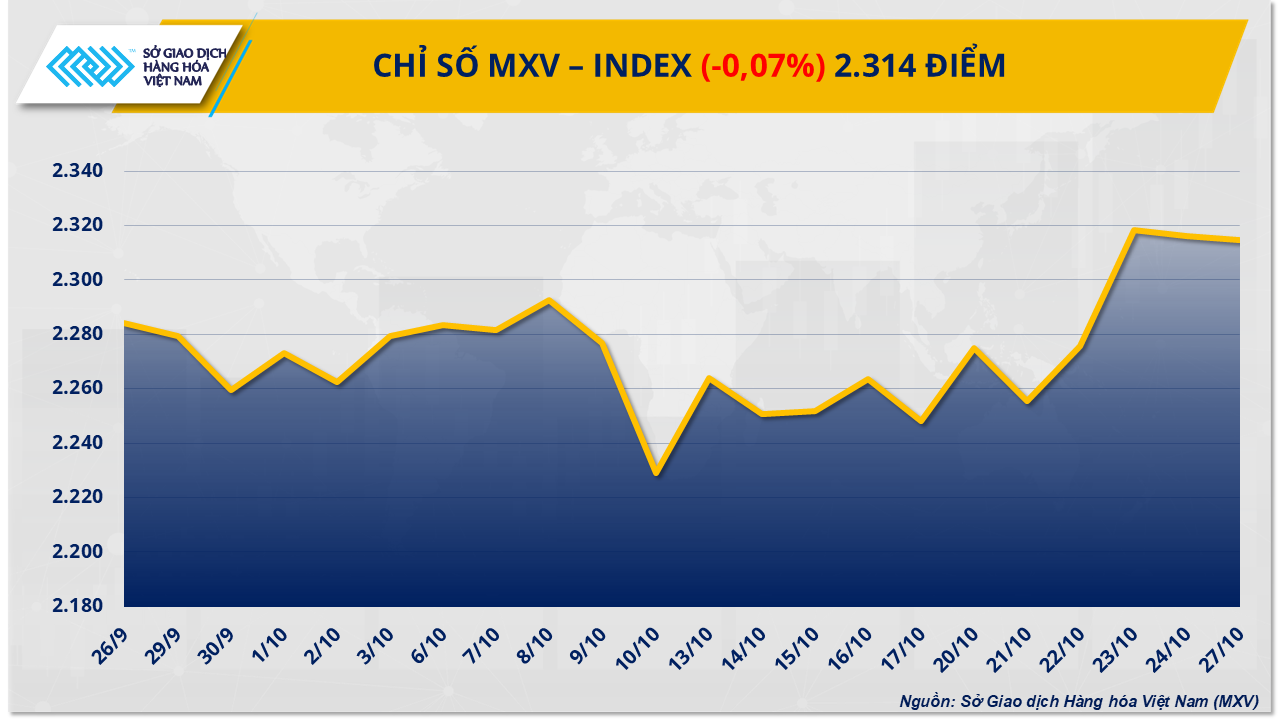
Sugar prices continue to slide due to supply pressure
At the end of yesterday's trading session, according to the Vietnam Commodity Exchange (MXV), the industrial raw materials group attracted the attention of domestic and international investors when leading the weakening trend. In particular, the prices of two sugar products continued to expand the weakening trend to the lowest level in the past 4 years. Specifically, the price of raw sugar 11 decreased by more than 3.4%, to 318.7 USD per ton; while white sugar also lost more than 2.1%, to 422 USD/ton.
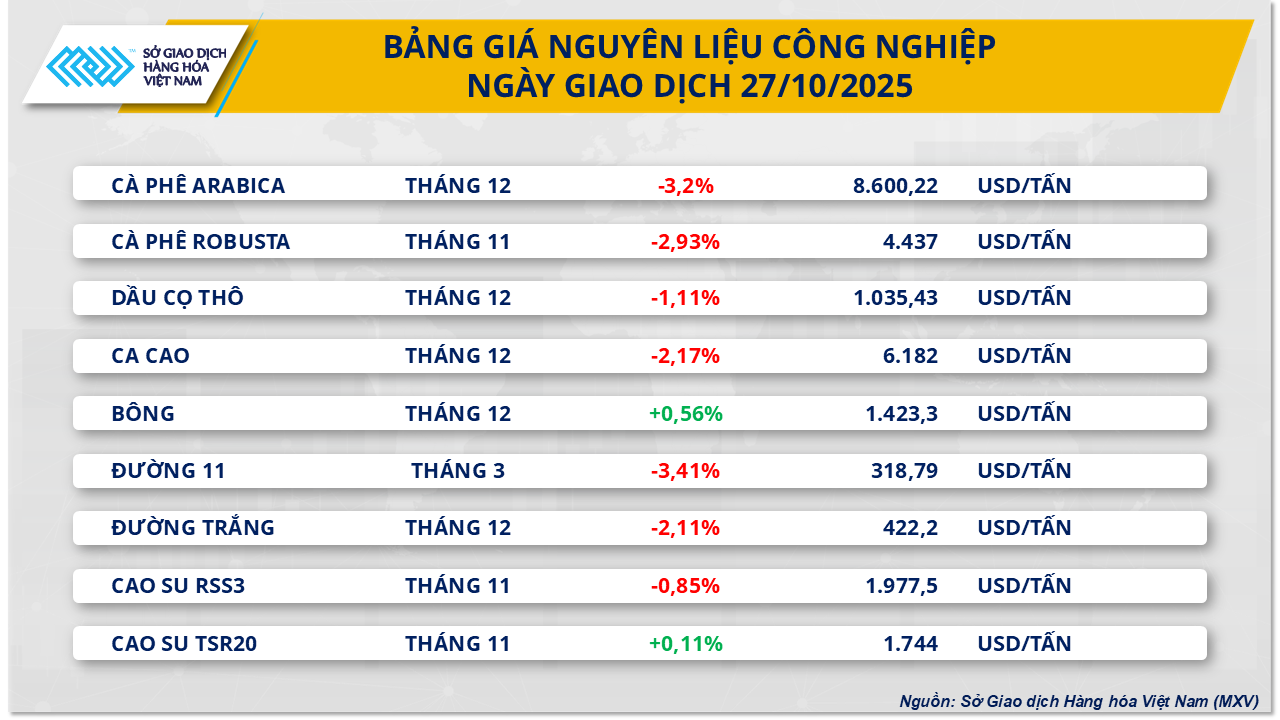
MXV said oversupply pressure remains the main reason for the weakness in the global sugar market. Although the 2025-2026 global sugar cycle has only begun for less than a month, the signs of oversupply are already evident.
According to the average of data compiled from 19 organizations published by NovaCana, the global sugar surplus in the 2025-2026 crop year is expected to reach 3.73 million tons, up 40.2% from the 2.66 million tons in the previous survey in May.
Some major players in the industry, such as Czarnikow, even forecast 7.4 million tonnes, 1.2 million tonnes more than the August estimate. If this scenario plays out, it would be the biggest surplus crop since 2017-2018.
On the production front, Brazil, the world’s largest sugar producer, continues to maintain stable supply in the 2025-2026 crop year with a significant increase in sugarcane output for crushing compared to last year. The latest UNICA report said sugar accounted for an average of 53% of sugarcane crushing this year, compared to 48% in the same period last year.
Meanwhile, according to a recent report by Itaú BBA, sugar production in India and Thailand is starting to look positive. A similar situation is observed in several Central American countries.
Meanwhile, in the domestic market, sugar prices recorded a slight increase at the end of last week but transactions were not really active. Wholesale prices in the West fluctuated between 17,000 and 17,150 VND/kg, while in Lao Bao, prices ranged from 15,700 to 16,400 VND/kg depending on the type. Factories continued to offer a variety of products and proactively reduced prices to clear inventory. Factory prices continued to maintain a downward trend compared to the previous period, ranging from 16,850 to 17,600 VND/kg.
US-China trade prospects “bring” soybean prices to 4-month peak
Closing yesterday's trading session, green covered all 7 items in the agricultural product group. Notably, the price of soybean futures for November jumped more than 2.4% to 392 USD/ton - the highest level since late June. This was also the 6th increase in the last 8 sessions, marking an impressive recovery series of this agricultural product.
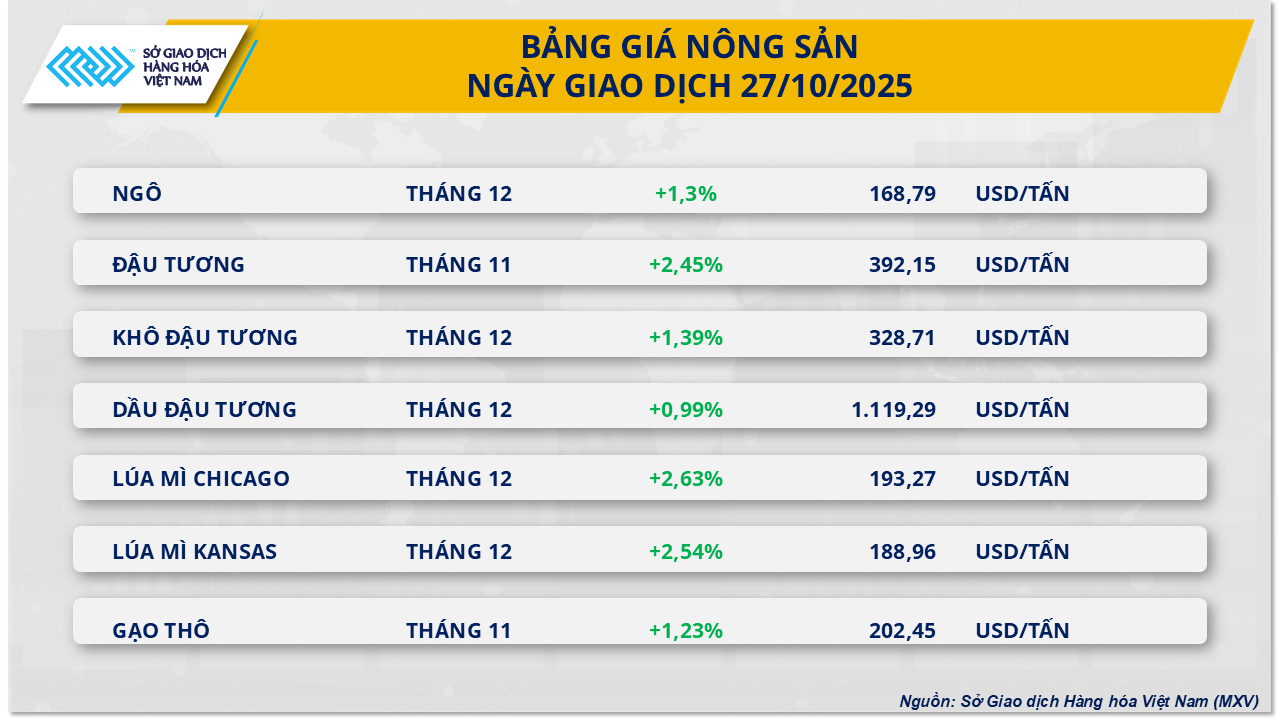
According to MXV, investors' optimism stems from the news that the two leaders of the US and China are expected to meet bilaterally in South Korea next month. Officials from both sides are said to be finalizing the framework of the agreement, in which Beijing could commit to buying "a significant volume" of US soybeans - US Treasury Secretary Scott Bessent confirmed in a recent statement.
“Current prices reflect expectations rather than supply and demand reality,” said Matt Ammermann, commodity risk manager at StoneX. “The key question is whether China will actually resume imports of US soybeans in the coming months.” The market is now seeing China continue to actively buy from Brazil and Argentina for shipments from December to March next year.
On the supply side, Brazil has completed planting 24% of its 2025-26 soybean crop, up from 18% at the same time last year. The country is expected to achieve a record output of 178.5 million tonnes, further cementing its position as the world’s largest supplier. However, most of Brazil’s production will only reach the market from March onwards. The estimated 5-8 million tonne gap between now and then could create room for US soybean exports to increase if a trade deal is signed.
Meanwhile, data from the US Department of Agriculture (USDA) showed that the country's soybean export inspection volume in the week ending October 23 only reached 1.06 million tons, down more than 33% compared to the previous week and nearly 60% lower than the same period in 2024. This development shows that actual demand is still weak and the market is being "kept warm" mainly by diplomatic expectations.
So, in general, the current soybean rally is not driven by fundamental factors such as supply and demand, but is mainly driven by political expectations and trade prospects between the world's two largest economies. If negotiations progress positively, this could be the starting point for a new recovery cycle for US soybeans. Conversely, any delay could trigger a wave of short-term profit-taking in the global agricultural commodity market.
Source: https://baotintuc.vn/kinh-te/phien-dau-tuan-gia-duong-roi-xuong-day-4-nam-gia-dau-tuong-tang-manh-hon-2-20251028082618997.htm



![[Photo] Prime Minister Pham Minh Chinh chaired a meeting to evaluate the operation of the two-level local government model.](https://vphoto.vietnam.vn/thumb/1200x675/vietnam/resource/IMAGE/2025/10/29/1761751710674_dsc-7999-jpg.webp)

![[Photo] Hue: Inside the kitchen that donates thousands of meals a day to people in flooded areas](https://vphoto.vietnam.vn/thumb/1200x675/vietnam/resource/IMAGE/2025/10/29/1761738508516_bepcomhue-jpg.webp)
![[Photo] Prime Minister Pham Minh Chinh chaired a meeting to discuss solutions to overcome the consequences of floods in the central provinces.](https://vphoto.vietnam.vn/thumb/1200x675/vietnam/resource/IMAGE/2025/10/29/1761716305524_dsc-7735-jpg.webp)
![[Photo] Human love in the flood in Hue](https://vphoto.vietnam.vn/thumb/1200x675/vietnam/resource/IMAGE/2025/10/29/1761740905727_4125427122470875256-2-jpg.webp)
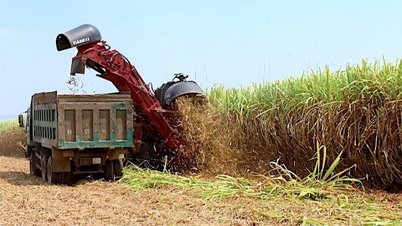

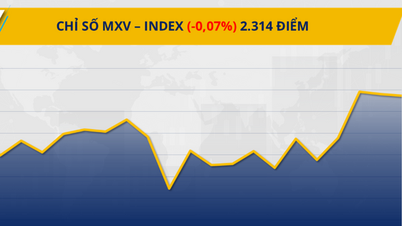

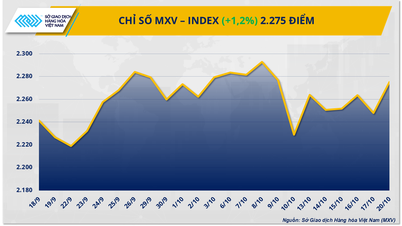
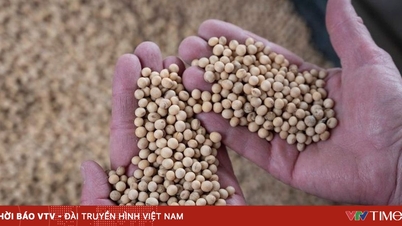

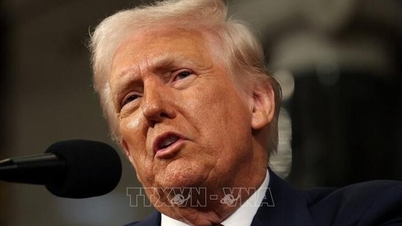
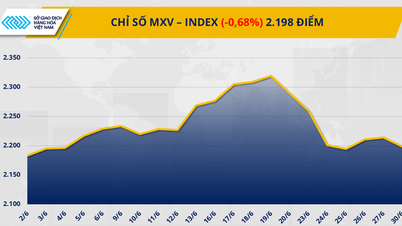
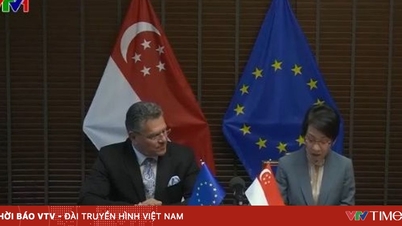


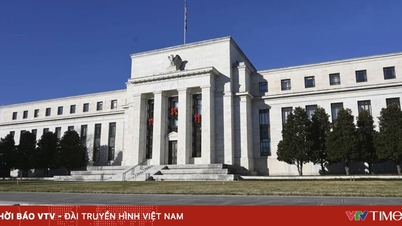







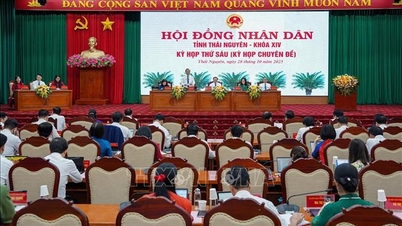
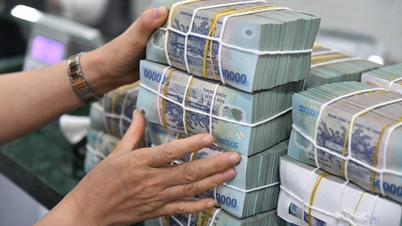















































![[Live] Concert Ha Long 2025: "Heritage Spirit - Brightening the Future"](https://vphoto.vietnam.vn/thumb/402x226/vietnam/resource/IMAGE/2025/10/29/1761743605124_g-anh-sang-am-thanh-hoanh-trang-cua-chuong-trinh-mang-den-trai-nghiem-dang-nho-cho-du-khach-22450328-17617424836781829598445-93-0-733-1024-crop-1761742492749383512980.jpeg)





























Comment (0)